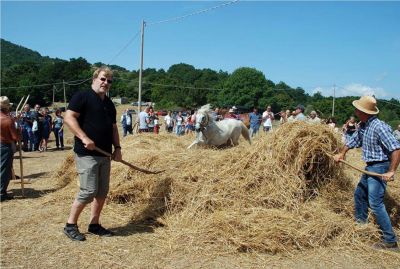If you have been reading this column and following my guidance, you might be at the point where you find yourself wanting to continue researching – in Italy. For us family historians, there is nothing more exciting than to walk the streets of our ancestral village. To ensure that your trip is successful here are some tips.
Planning Your Trip – Travel Logistics
Many of our ancestors come from small, remote villages outside of major tourist cities. This makes trip planning very important because there may not be accessible public transportation or the people you encounter may not speak fluent English. These things can be managed with planning. One of the first things you need to determine is what mode of transportation will get you closest to your ancestral village. If you are lucky, there will be a train station nearby, but, like me, if your ancestors come from a small mountainous village with no train service, you may need to hire a driver or rent a car. I have found driving in Italy to be quite enjoyable.
If you do rent a car, I recommend selecting the smallest car that will accommodate you and your luggage. The streets of old towns are not very wide and you will appreciate having a small car when you are driving these narrow passages. Another important tip when driving, be sure you learn to read European road signs which are a bit different than the signs we have here in the U.S.
You will need to purchase an International Driving License for about $20 to drive in Italy. You can get one at AAA. Another important consideration when renting a car in Europe is to check if your personal auto insurance policy covers your rental car. Many do not, but I have found affordable coverage purchased through the rental car company. Hiring a local driver is another option. This can be expensive with prices averaging a few hundred Euros per day. Work with your travel agent to find a reputable company.
As for accommodations, my favorite places to stay when I am out in the countryside are agriturismi, farm stays. These are usually farmhouses that have added guest rooms and often include breakfast and sometimes additional meals for a reasonable cost. In my experience, the food has been wonderful as it has been fresh and authentic local cuisine with plenty of vino! Visit www.agriturismo.it for listings of available properties in the area you want to visit.
Planning Your Trip – Genealogical Research
Before traveling to Italy, make sure to exhaust all available online records and have a research plan with goals. For instance, identify those records you want to research and find out in advance where they are located. Have both electronic and paper copies of your lists and reference materials that you plan to bring to Italy. It’s prudent not to rely solely on electronic copies. This may mean that you start planning a year in advance of your trip. You will want to know the physical location of where the records are held and the location’s business hours.
If possible, I highly recommend that you contact the record holder in advance of your trip to make an appointment and share with the record holder what records you wish to research. There is nothing more disappointing than travelling thousands of miles to find a closed location or that a record holder is unable to accommodate your visit. If your Italian language skills are lacking, you may want to consider hiring a local guide or researcher to help you with communication.
Also, carry small denominations of Euros for any fees associated with the records you are seeking. When I visit a parish to do research, I also leave an offering of 50-100 Euros to show my appreciation for their time in opening their records to me.
When you are planning your trip, create a realistic itinerary and keep in mind that Italians operate at a different pace than we are used to here in America. They embrace the concept of “la bella vita” and some businesses and government offices close for a few hours mid-day. Do not try to pack everything into one day. Besides just looking for records, you might want to stroll the streets of the village or visit churches and other landmarks that would have been important to your ancestors. Be sure to take plenty of photographs to show your family back home where they came from and perhaps help spark the genealogy bug in them!



